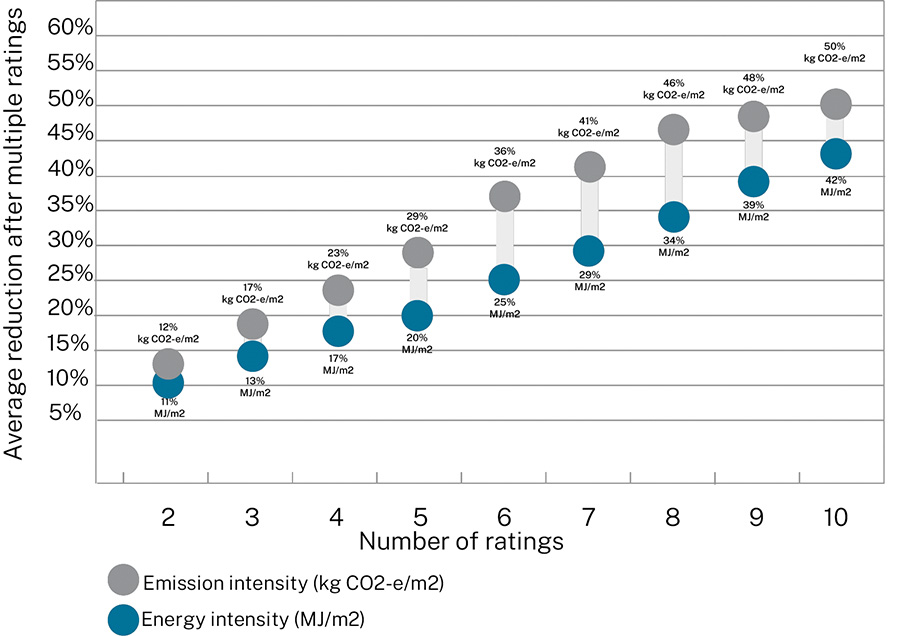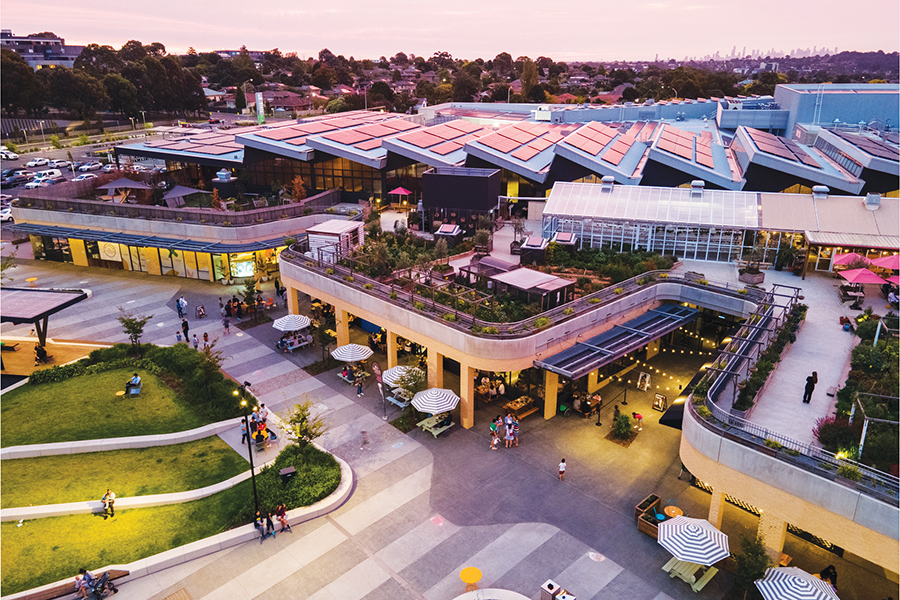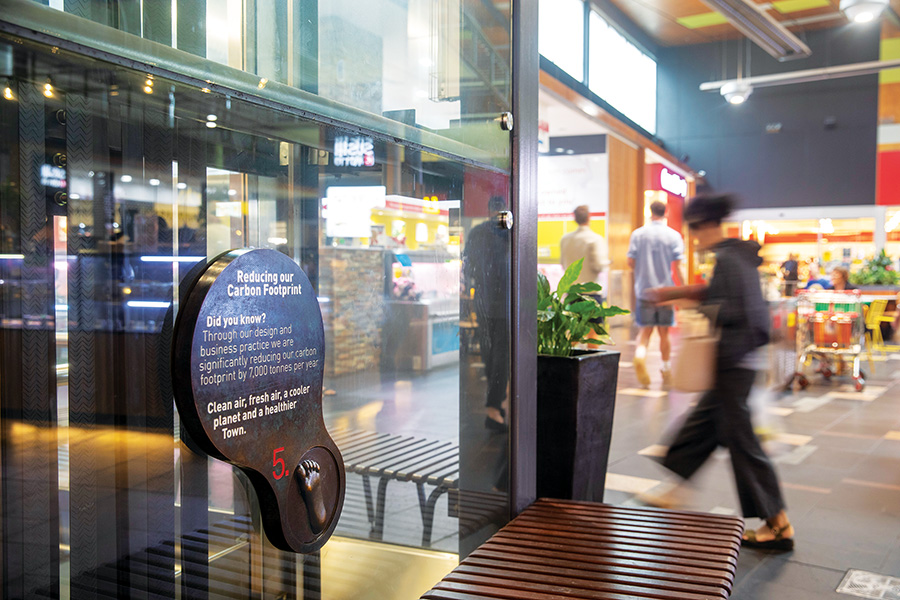NABERS recently launched its Annual Report for the 2022-2023 financial year. Interestingly, when NABERS first began ratings the energy and water consumption of shopping centres in 2010, the average rating was only 0.9 stars. Last year, 238 shopping centres obtained NABERS ratings and the average Energy rating grew to 4.5 stars!
Australia’s retail and shopping centre sector has been on a remarkable journey towards greater energy efficiency and reduced carbon emissions over the past decade.
In most countries around the world, understanding to what extent the retail sector is moving towards net-zero emissions is extremely challenging. Globally, there are typically few sources of publicly available data on retail emissions, and much of the limited data available is based on estimates rather than real measurements.
Fortunately, the picture is very different in Australia because we have the National Australian Built Environment Rating System (NABERS), a voluntary government certification scheme that compares how sustainable shopping centres are using real energy and emissions measurements. And, most importantly, nearly all major shopping centre portfolios have become enthusiastic participants in NABERS ratings, using them to set public targets for reducing energy use and emissions every year.
Having worked in building sustainability for more than 15 years, I have seen first-hand how impactful comparing your emissions against similar buildings is in driving sustainability action. I’ve seen owners of energy-inefficient buildings waste hundreds of thousands of dollars in energy bills, every year, just because they didn’t not know they were using so much more energy than everyone else. I have also seen many shopping centres improve drastically after finding out their NABERS Energy rating was a mere 1 star, and finding out for the first time that their building is using five times more energy than their most efficient 6-star competitors. Understanding how much energy you are using compared to others is a foundational step in building sustainability, and the evolution in the number of Australian shopping centres doing this says much about how far the sector has come in its sustainability journey.
In 2010, when NABERS for shopping centres was quite new, only 23 shopping centres were certified inthe scheme. This has been growing fast every year since, to 238 shopping centres in the 22-23 financial year, a tenfold increase during that period.

Put another way, close to half of the Australian shopping centres’ floorspaces are now using NABERS to set annual emissions reductions targets and are publicly disclosing these. This includes the majority of the medium and large shopping centres in Australia, the results of many of which can be found publicly on the NABERS website.
With more than ten years of ratings for the shopping centre sector, we now have enough data to confirm that shopping centres have undergone a profound transformation during this time.
In 2013, the average NABERS rating for shopping centres was 2.7 stars, a figure that has increased to an average of 4.5 stars today. This improvement has been driven by a whopping 33% decline in energy use in these shopping centres during that time, a rate of improvement among the fastest in any country in the world.
In fact, an analysis of all shopping centre energy ratings shows a correlation between the number of ratings a shopping centre undertakes and the reduction in emission and energy intensity.
What improvements are driving this revolution in retail sustainability, you may ask? The answer is wide-ranging, from capital upgrades like more efficient equipment and rooftop solar to investment in human capital through to more sophisticated facilities management and analytics. But their combined effect on the industry is clear: Australian shopping centres lead the world in sustainability and are recognised as such in global initiatives such as the Global Real Estate Sustainability Benchmark (GRESB) every year.
These combined efforts of hundreds of sustainability professionals in the retail sector are truly impressive and something to be genuinely proud of. This begs the question: is there anything left to be done to get retail to net zero-emissions, or are we there yet? As is often the case in trying to transform a whole sector, the answer is that there is still a long way to go and much more to do.
For starters, the transformation mentioned earlier is about one-half of the shopping centre sector. The other half includes the sustainability laggards, many of whom are yet to take their first steps towards sustainability. That part of the market has historically been much harder to engage in sustainability, not just in Australia but globally, and therefore, driving change in that segment may prove much harder to do. Then, there is the issue of gas usage in shopping centres. Reaching net-zero emissions by 2050 means we need to stop burning fossil fuels, and most research in Australia and overseas suggests the main solution is to electrify our buildings.

Burwood Brickworks, VIC
In the past year, 82% of shopping centres certified by NABERS used gas on-site, mostly for cooking purposes and space heating. While retail property leaders are increasingly announcing plans to electrify their shopping centres, most of them are still at a very early stage in this transition. It is fair to say there are many challenges on tackling on-site fossil fuels in buildings, for the leaders as well as the rest of the sector.
Finally, the retail sector does not reside exclusively inside of shopping centres but also in the tens of thousands of street-facing stores that fill our cities with life. Reducing energy and emissions in street-facing retail stores has had less attention and support from governments than in shopping centres to date, but that is changing. In fact, the Australian and state governments last year approved expanding NABERS Energy and Water ratings to all of retail, including street-facing stores as well as tenancies within shopping centres.
At NABERS, we are very excited about the prospect of being able to support the decarbonisation efforts of many leaders in the retail sector. But we also know the retail sector is immense, and there is still much to do.
While we still have a long way to go to bring the retail sector to net-zero emissions, there is much to be hopeful about. The progress we have seen in Australian shopping centres is living proof that it is possible to achieve huge energy and emissions reduction across an entire sector in just one decade. Our challenge now is to scale up this progress to reach all corners of the retail sector by the end of this decade.
This article by Carlos Flores, Director at NABERS is featured in the latest issue of SCN magazine.





















